Ovarian Cyst- Meaning, Types, Symptoms, Causes & Treatment
Ovarian cysts are the adnexal masses or lumps formed inside one or both ovaries. These masses are filled with fluid formed in ovaries. Ovaries are the reproductive organs found in the pelvic region of a female body. The major roles of ovaries are to release eggs (or ovum), normally every month, and reproductive hormones, progesterone, and estrogen. Cyst development in ovaries gives rise to various problems in the reproductive cycle of a woman. It can create problems in pregnancy and other hormonal, mental, and physical disturbances.
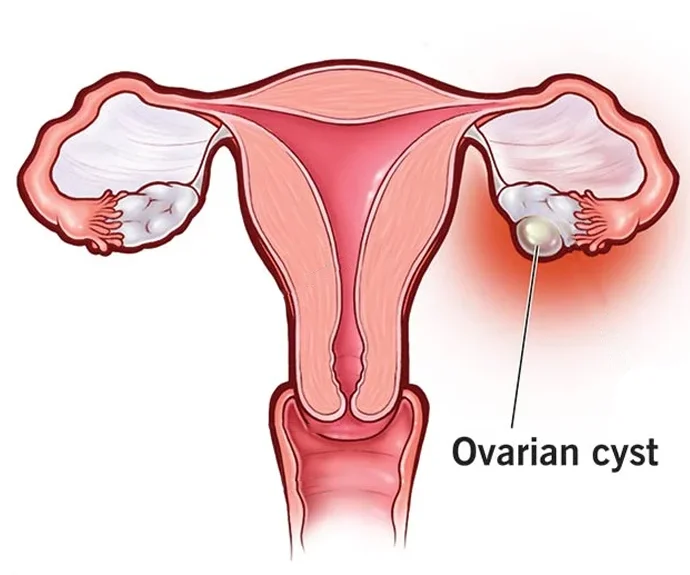
WHAT IS AN OVARIAN CYST
An ovarian cyst is a fluid-filled sac that develops on one of the ovaries in a woman's reproductive system. Ovarian cysts can vary in size, from as small as a pea to larger than a grapefruit. Most ovarian cysts are benign and do not cause symptoms, but some may cause pain, bloating, or other uncomfortable symptoms. Treatment for ovarian cysts may depend on the size and type of cyst, as well as any symptoms present.
Ovaries are small, almond-shaped reproductive organs found in the pelvic region of a female body. Most of the time, the cysts inside ovaries are painless and asymptomatic. Moreover, most women are usually unaware of having cysts in their ovaries unless and until they are visible in a diagnostic imaging test or a routine pelvic examination.

TYPES OF OVARIAN CYST
Functional cysts
These are the most common type of ovarian cysts and are usually harmless. Functional cysts are formed during the normal menstrual cycle.
1

Endometriotic Cysts
These cysts are formed from endometrial tissue that grows outside the uterus and attaches to the ovary.
2
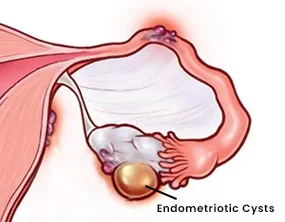
Polycystic ovaries
This condition involves the development of multiple small cysts on the ovaries, which can cause hormonal imbalances and affect fertility.
3

Cystadenomas
These cysts develop from cells on the surface of the ovary and can be filled with fluid or mucus.
4
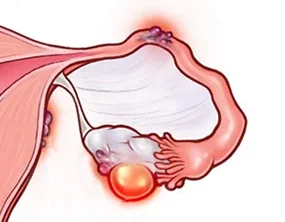
CAUSES
- Hormonal imbalance
- Certain medications or drugs
- Infections affecting ovaries or fallopian tubes
HOW IS IT FORMED
Ovarian cysts are formed when follicles that protect and release an egg (ova) do not release its contents along with the egg. In this case, the follicles swell, forming ovarian cysts. Ovarian cysts are fluid-filled sacs that form in the ovaries. They are a common occurrence in women of reproductive age and can be caused by a variety of factors, such as hormonal imbalances, endometriosis, or polycystic ovary syndrome (PCOS).
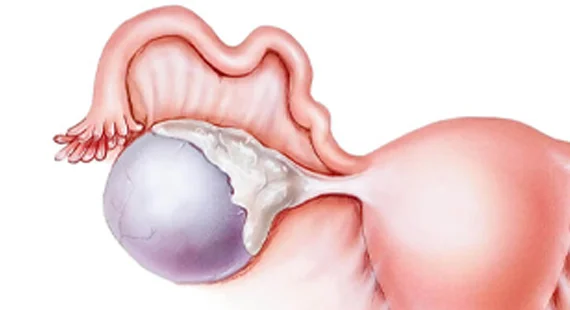
SYMPTOMS
- Changes in the menstrual cycle
- Intense pelvic pain
- Abnormal bleeding from the vagina
- Weight gain
- Bloating in abdomen
- Frequent urination

DIAGNOSIS
There are various diagnostic imaging tools to identify if there are cysts in your ovary or not; some of these tests include,
- Ultrasound scan
- Blood test to further check if the cyst is cancerous or not
- CT scan: an imaging tool to visualize internal organs through cross-sectional images.
- MRI: A diagnostic test based on magnetic fields to visualize the inside of your ovary or any other part of the body.
DO's
DONT's
TREATMENTS
NON SURGICAL TREATMENTS

Non-surgical treatments for ovarian cysts may include watchful waiting, hormonal birth control pills, or medications to help shrink the cyst. However, these treatments may not be effective for all types of cysts, and surgery may be necessary.
- NSAIDs (Non-steroidal anti-inflammatory drugs) to help with cramps.
- Birth control hormonal pills for hormonal regulation.
SURGICAL TREATMENTS
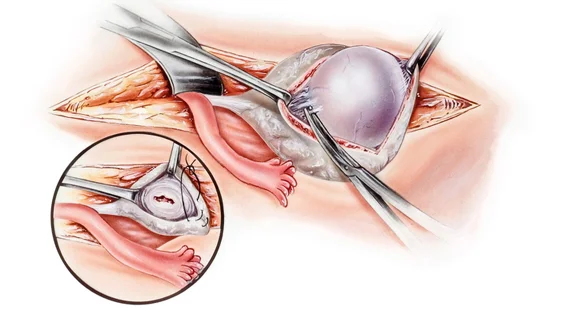
Surgical treatments for ovarian cysts may be recommended if the cyst is large, causing symptoms such as pain or discomfort, or if there is concern that the cyst may be cancerous. Surgical treatments may include:
Laparoscopy: This minimally invasive surgical procedure involves making small incisions in the abdomen and inserting a thin, flexible instrument with a camera into the pelvic area to remove the cyst.
Laparotomy: This is a more invasive surgical procedure that involves making a larger incision in the abdomen to remove the cyst. This procedure is typically used for larger cysts or if cancer is suspected.
RISKS AND COMPLICATIONS
Risk factors:
- Pregnancy
- Endometriosis
- Hormonal problems
- Infections in the pelvic region
- Complications associated with Ovarian cyst
- Ovarian torsion
- Ruptured cysts
- cancerous cysts
Complications:
In some cases, ovarian cysts may cause serious health complications like
- Ovarian cancer may develop
- Bleeding or pelvic pain due to rupture of ovarian cysts
- Twisting of ovarian cyst that can block blood vessels, interrupting the blood supply

IF LEFT UNTREATED
If the ovarian cyst is left untreated, in some cases, it does not create any sort of issue inside the body, or it does not affect the reproductive health of the person. However, most of the time, untreated ovarian cysts may cause the following problems,
- Severe pain
- Infertility
- Formation of multiple cysts, which can rupture inside, causing infections and bleeding, and pain.
- It disturbs the hormones
- Irregular periods
COST
The average cost of cyst removal to ovarian cyst is ₹6,000 - ₹16,000. The cost varies from the type of surgical procedure, hospital facilities and cities.
Financial Options

INSURANCE COVERAGE
The cost of surgical treatment for ovarian cyst is covered under health insurance. Most of the time, the insurer will cover a particular amount for the surgery. The insurance coverage for the treatment of ovarian cysts may vary depending on the type of insurance plan and the specific treatment being used. In general, most insurance plans will cover surgical treatments for ovarian cysts if they are medically necessary. However, it is important to check with your insurance provider to understand the specifics of your coverage.
It is important to consult with a healthcare provider if you experience symptoms of an ovarian cyst or have concerns about your ovarian health. They can help determine the best course of treatment for your individual needs.

Know more about Ovarian Cyst
Ovarian cysts are fluid-filled sacs that develop in the ovaries. They are relatively common, with many women experiencing at least one ovarian cyst during their lifetime. Most ovarian cysts are benign, meaning they are not cancerous, and many will resolve on their own without any intervention. However, some ovarian cysts can be more serious and require medical attention.
Glamyo Health is a healthcare brand operating in the fields of elective and cosmetic surgeries, with a chain of hospitals and clinics operating in 40+ cities all over India.
Looking for effective treatment of ovarian cysts? Glamyo Health provides the best and safest options for ovarian cyst removal. Know the best Gynecologist and surgeons in Delhi and Gynecology clinics.
Read about the Advanced surgical options available to get rid of ovarian cysts permanently. If you have questions about how long does it take to get rid of a ovarian cyst, know the estimated time of Recovery. We provide you with our happy patient reviews to know their journey throughout the treatment.



 New Delhi
New Delhi  Bangalore
Bangalore  Mumbai
Mumbai  Hyderabad
Hyderabad  Pune
Pune  Chennai
Chennai 
